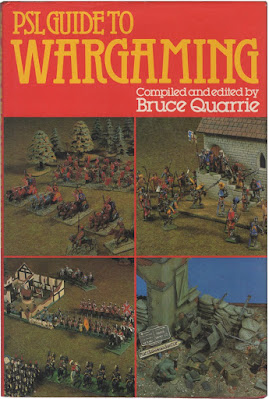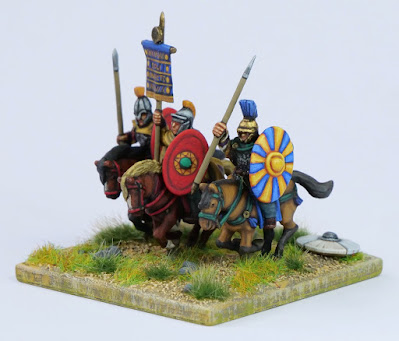My earlier WW2 vehicles were painted with lots of dry brushing and, for the British ones, using a olive green mixed by eye. Unfortunately this meant I had little confidence I could mix the same colour again and even within the earlier ones I have a lot of variation. Looking at those models now, I am not really satisfied with the effect. I would like to achieve a cleaner and more uniform appearance, as well as a more realistic (and repeatable) match for SCC15.
My first thought, having relied on the painting tutorials on the Crac des Chevaliers blog for my infantry was to continue with the "clean style" for vehicles. Although the results on there look great, when I made a test I wasn't really happy with either my execution and thought it was a bit too clean on the larger canvas of a tank. Later vehicles on CdC are painted by airbrush with a panel high lighting style which I think I prefer. Although I have owned an airbrush for a few years, purchased to paint my 1:1250 / 1:1200 waterline ship models, I have never really learnt to use it for more than laying down a single uniform coat. With my wargames painting focussing on Italian Wars French and then Late Romans, there was little call for airbrushing! However I came across some great tutorials by Rubén Torregrosa on his HeresyBrush blog, applying this technique to 1:144 tanks so thought I'd give it a go.
I had some vehicles part complete by the dry-brush method but looking closely at these, the assembly wasn't that great and some detail was already obscured by the paint so I decided to strip them back to bare metal. I used a cheap paint stripper from Wilco, which worked well, followed up with a soak in Fairy Ultra and good scrub with a stiff nylon brush and a lighter brush with a brass wire brush to really clean up the surface. The brushes were from a set of 3, also from Wilco, for the bargain price of £1.00 - I'm not sure what I'll do with the miniature steel wire brush but it may come in handy for DIY.
To hold the vehicles for spraying, I attached short sections on dowel to the undersides and appropriate drilled holes in a piece of wood to hold them for drying. The Daimler AC turrets already had their magnets glued on so I just put them on top of round nails, relying on the strong magnet to hold them firmly enough.
I should at this point give a little shout out for a small model and paint shop near me in Coventry: the Paint Rack. I wanted to get the Mig Ammo filters and washes recommended on Heresy Brush and, after recent disappointing results with mat varnish, the Mig Ammo Ultra-Matt varnish that Chevalier de la Terre suggested. The paint rack was able to supply these as well as such much needed advise on airbrushing the primer and varnish.
I started with an airbrushed primer coat using Mig Ammo One Shot black. In hidsight, I think black was maybe a mistake as it was difficulty to see where the dark base coat was covering it - I'll probably use grey next time.
My SCC15 is a 50-50 of Vallejo Model Color 888 Olive Grey and 924 Russian Uniform. I started with a base of 50% SCC15 with 50% black then SCC15 applied from above and at 45° then a first highlight of three parts SCC15 to one part buff and final highlight of 50-50 SCC15 and buff. I picked out small details and some edges with a fine brush and painted details like tools and stowage normally.
The tutorial suggested Vallejo 304 Track Primer, appropriately enough, for the tracks. I didn't have that and figured any medium grey-brown would be OK so used a 50-50 mix of Olive Brown and Medium Grey.
With the painting done, I was looking forward to applying the decals then filters and washes to bring the whole thing together and add definition. To provide a smooth surface for the decals, I brushed on some Tamiya gloss varnish locally where the markings would go and over exposed details to provide a bit of extra protection. This was a huge mistake. The Tamiya varnish reacted with the Vallejo paint to produce a bubby, smeared mess and I didn't realise until I had done the last part of the last vehicle.
So rather than a series of finished photos, here they are back in the paint stripper.
As a late addition, adding insult to injury, the paint stripper has turned the black primer into a tar-like goo that is insoluble in everything I’ve tried so far.
We (hopefully), learn from our mistakes and this is certainly providing a lot of learning opportunities!



















































